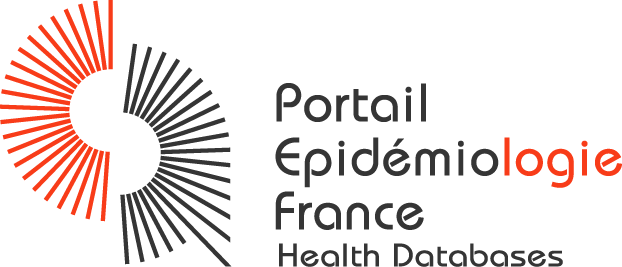 ITMO Santé Publique
ITMO Santé Publique

Date de modification : 11/05/2015 | Version : 2 | ID : 69
| Général | |
| Identification | |
| Nom détaillé | Rhône Alpes birth defects registry |
| Sigle ou acronyme | REMERA |
| Numéro d'enregistrement (ID-RCB ou EUDRACT, CNIL, CPP, etc.) | CNIL N°910397 |
| Thématiques générales | |
| Domaine médical |
Disability/handicap Gynecology/ obstetrics |
| Déterminants de santé |
Addictions Genetic Iatrogenic Intoxication Lifestyle and behavior Medicine Nutrition Occupation Pollution Social and psychosocial factors |
| Mots-clés | prevalence of congenital malformations, reprotoxic risk factors, antenatal screening, eugenic abortions, perinatality, database on malformations, epidemiology, follow-up, alert, teratogens, genetics |
| Responsable(s) scientifique(s) | |
| Nom du responsable | Amar |
| Prénom | Emmanuelle |
| Adresse |
7 rue Ste Catherine 69 001 LYON |
| Téléphone | + 33 (0)4 78 58 34 84 |
| emmanuelle.amar@remera.fr | |
| Laboratoire | REMERA9 Quai Jean Moulin690001 LYON |
| Organisme | REMERA et CHU DE |
| Collaborations | |
| Financements | |
| Financements |
Public |
| Précisions | InVS, Conseil Régional Rhône Alpes, Inserm, Afssaps, Registre qualifié de 2009 à 2011 |
| Gouvernance de la base de données | |
| Organisation(s) responsable(s) ou promoteur | Registre des Malformations en Rhône Alpes |
| Statut de l’organisation |
Mixte |
| Contact(s) supplémentaire(s) | |
| Caractéristiques | |
| Type de base de données | |
| Type de base de données |
Morbidity registers |
| Objectif de la base de données | |
| Objectif principal |
Objectives in terms of public health:
1) Evaluation of the importance of the change in malformations (incidence, factors, appearance of a new malformation or of a new malformation symptom, space-time variations of these incidences) 2) Evaluation of the actions in public health: measure the impact of the actions implemented, especially perinatal screening and also the primary prevention initiatives on the prevalence of malformations and propose orientations for the development of health programs. 3) Alert in the case where a link with a teratogen, whether or not known, is suspected In terms of research: 1) Highlight the factors of risk of malformation 2) Study their interactions with susceptibilities of a genetic nature |
| Critères d'inclusion |
The following are included in the registry:
Congenital malformations diagnosed antenatally or postnatally until the end of the first year of life. |
| Type de population | |
| Age |
Newborns (birth to 28 days) Infant (28 days to 2 years) |
| Population concernée |
Sick population |
| Sexe |
Male Woman |
| Champ géographique |
Departmental |
| Régions concernées par la base de données |
Auvergne Rhône-Alpes |
| Détail du champ géographique | Département of Rhône, Isère, Savoie, and Loire |
| Collecte | |
| Dates | |
| Année du premier recueil | 01/1973 |
| Taille de la base de données | |
| Taille de la base de données (en nombre d'individus) |
Greater than 20 000 individuals |
| Détail du nombre d'individus | 61 000 (in 2012) |
| Données | |
| Activité de la base |
Current data collection |
| Type de données recueillies |
Clinical data Declarative data Paraclinical data Biological data Administrative data |
| Données cliniques, précisions |
Direct physical measures |
| Données déclaratives, précisions |
Phone interview |
| Données paracliniques, précisions | Height, weight, BP of mother ; height, weight, head circumference, crown-rump length of the child/fetus |
| Données biologiques, précisions | triple test, karyotype, glycemia |
| Données administratives, précisions | Identification data (Name, first name, birthday, location, sex) |
| Existence d’une biothèque |
No |
| Paramètres de santé étudiés |
Health event/morbidity Health event/mortality |
| Modalités | |
| Mode de recueil des données | Active collection: survey takers go to the departments and record in their databases all of the information contained in the medical dossiers concerning congenital malformations and their determinants |
| Suivi des participants |
No |
| Appariement avec des sources administratives |
No |
| Valorisation et accès | |
| Valorisation et accès | |
| Accès | |
| Charte d'accès aux données (convention de mise à disposition, format de données et délais de mise à disposition) |
An annual activity report
Access to the data (depersonalized) is possible, on request |
| Accès aux données agrégées |
Access on specific project only |
| Accès aux données individuelles |
Access on specific project only |
Partenaires - F.A.Q. - Contact - Plan du site - Mentions légales - Administration - PEF-HD - Mis à jour le 15 décembre 2020 - Version 4.10.05